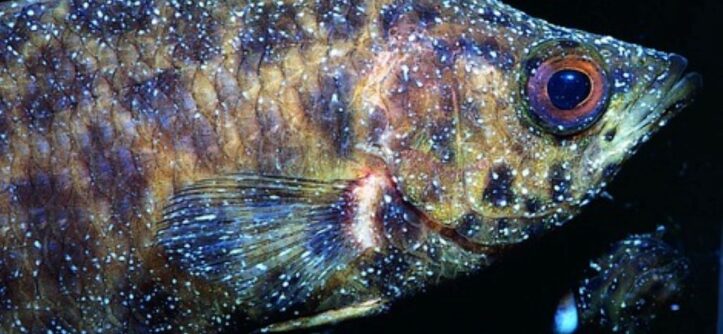Fish health problems often stem from invisible water chemistry imbalances that affect essential mineral availability. Many pond and aquarium owners struggle to identify when their fish are suffering from mineral deficiencies rather than bacterial or parasitic infections. These deficiencies can cause serious health issues that mimic other diseases, making accurate diagnosis challenging. Be Aquarium provides comprehensive guidance for understanding the complex relationship between water chemistry and fish health.
Mineral deficiencies in fish typically result from improper water parameters, inadequate filtration, or poor understanding of essential water chemistry concepts. Fish require specific minerals for proper gill function, bone development, and immune system health. However, these nutrients must be available in the correct ratios and concentrations to be beneficial rather than harmful.
Understanding water chemistry fundamentals becomes crucial when diagnosing mineral-related fish illnesses. A comprehensive kh gh explanation for pond water helps pond keepers recognize how carbonate hardness and general hardness affect fish health and mineral availability. Therefore, proper water testing and interpretation skills are essential for maintaining healthy fish populations.
Understanding Essential Minerals for Fish Health
Primary Mineral Requirements
Fish require several key minerals for optimal health and normal physiological functions. Calcium supports bone development, scale formation, and proper muscle function. Additionally, magnesium plays crucial roles in enzyme activation and cellular processes throughout fish bodies.
Potassium maintains proper osmotic balance and supports nerve transmission in fish nervous systems. Sodium works alongside potassium to regulate fluid balance and maintain proper gill function. However, these minerals must be present in appropriate ratios to avoid toxicity or deficiency symptoms.
Trace minerals like iron, zinc, and copper support immune function and metabolic processes. Even small deficiencies in these elements can lead to significant health problems. Therefore, maintaining proper mineral balance requires understanding both major and trace element needs.
How Fish Absorb Minerals
Fish absorb essential minerals primarily through their gills and digestive system. Gills extract dissolved minerals directly from water while also managing waste elimination and gas exchange. Additionally, dietary sources provide concentrated mineral forms that supplement water-based absorption.
The absorption process depends heavily on water chemistry parameters like pH, temperature, and dissolved oxygen levels. Improper conditions can prevent effective mineral uptake even when adequate concentrations exist in the water. However, optimal water conditions maximize mineral availability and fish health outcomes.
Stress factors like overcrowding, poor water quality, or disease can impair mineral absorption capacity. This creates a cycle where stressed fish become more susceptible to mineral deficiencies. Therefore, comprehensive health management addresses both water chemistry and environmental stressors.
Common Mineral Deficiency Symptoms
Physical Signs and Behavioral Changes
Calcium deficiency often manifests as skeletal deformities, particularly in young fish during rapid growth periods. Affected fish may develop curved spines, shortened gill covers, or soft, flexible bones that bend under normal activity. Additionally, scales may appear loose or easily detached during handling.
Magnesium deficiency typically causes muscle tremors, erratic swimming patterns, and difficulty maintaining proper buoyancy. Fish may swim in circles, struggle to reach feeding areas, or display unusual jerky movements. However, these symptoms can easily be mistaken for neurological disorders or swim bladder problems.
Potassium deficiency leads to weakness, lethargy, and poor appetite in affected fish. Swimming becomes labored, and fish may rest on tank bottoms more frequently than normal. Therefore, observing changes in activity levels and feeding behavior provides important diagnostic clues.
Gill and Respiratory Issues
Mineral deficiencies significantly impact gill function and respiratory efficiency. Calcium-deficient fish often develop swollen or inflamed gills that appear pale or discolored. Additionally, breathing rates may increase as damaged gills struggle to extract adequate oxygen from water.
Magnesium deficiency can cause gill lamellae to become fragile and prone to damage during normal water flow. This leads to reduced surface area for gas exchange and mineral absorption. However, microscopic examination may be required to identify these subtle structural changes.
Iron deficiency results in pale gill coloration and reduced oxygen-carrying capacity. Fish may gasp at the surface or show signs of oxygen stress even in well-aerated systems. Therefore, gill color and breathing patterns provide valuable information about mineral status.
Water Chemistry Testing for Diagnosis
Essential Parameters to Monitor
General hardness (GH) measures the total concentration of dissolved minerals, primarily calcium and magnesium compounds. Low GH values indicate insufficient mineral content that can lead to deficiency symptoms. Additionally, extremely high GH can cause mineral imbalances that interfere with proper absorption.
Carbonate hardness (KH) indicates buffering capacity and affects mineral availability through pH stability. Unstable pH conditions impair mineral uptake even when adequate concentrations exist in the water. However, proper KH levels maintain optimal conditions for mineral absorption and fish health.
pH levels directly influence mineral solubility and bioavailability to fish. Most freshwater fish require slightly acidic to neutral pH ranges for optimal mineral absorption. Therefore, regular pH monitoring helps identify conditions that might impair mineral utilization.
Interpreting Test Results
Compare test results to species-specific requirements rather than generic recommended ranges. Different fish species evolved in various water conditions and have correspondingly different mineral needs. Additionally, breeding fish often require higher mineral concentrations to support egg development and fry growth.
Track parameter trends over time rather than relying on single test results. Gradual changes often indicate developing problems before symptoms become apparent in fish populations. However, sudden parameter shifts require immediate attention to prevent health crises.
Document test results alongside fish behavior observations to identify correlations between water chemistry and health symptoms. This data helps distinguish mineral deficiency from other health problems. Therefore, systematic record-keeping improves diagnostic accuracy over time.
Species-Specific Mineral Requirements
Freshwater Fish Needs
Goldfish and koi require moderate to high mineral content, particularly calcium for proper scale and bone development. These cold-water species thrive in harder water conditions that provide adequate mineral buffering. Additionally, their large size and active metabolism demand consistent mineral availability.
Tropical community fish species vary widely in their mineral requirements based on natural habitat conditions. Soft-water species like tetras and discus prefer lower mineral concentrations, while African cichlids require very hard, mineral-rich water. However, gradual acclimation can help fish adapt to different mineral levels.
Native pond fish often require mineral profiles similar to local water conditions. Matching natural habitat chemistry typically provides optimal mineral balance for indigenous species. Therefore, research local water characteristics when selecting appropriate fish species.
Marine Fish Considerations
Saltwater fish face different mineral challenges due to the high dissolved mineral content in marine environments. These fish must actively regulate mineral uptake to prevent toxicity while still meeting metabolic needs. Additionally, marine systems require specialized mineral supplementation to maintain proper ionic balance.
Reef fish have evolved complex mechanisms to manage mineral excess while extracting needed trace elements. Coral reef environments provide abundant calcium and magnesium but may be deficient in certain trace minerals. However, captive marine systems often require careful mineral supplementation to replicate natural conditions.
Brackish water fish represent an intermediate category with moderate mineral requirements. These species can often tolerate wider ranges of mineral concentrations than pure freshwater or marine fish. Therefore, brackish systems offer more flexibility in mineral management approaches.
Diagnostic Tools and Techniques
Visual Examination Methods
Systematic visual examination should follow a consistent protocol to avoid missing subtle symptoms. Begin with overall appearance, noting body condition, color intensity, and swimming behavior. Additionally, examine fins for fraying, discoloration, or unusual growth patterns that might indicate mineral deficiency.
Gill examination requires careful handling to avoid additional stress to already compromised fish. Look for swelling, discoloration, or excessive mucus production that might indicate mineral-related problems. However, distinguish between mineral deficiency symptoms and infectious disease signs.
Scale examination can reveal mineral deficiency effects on fish integument. Loose scales, poor coloration, or unusual texture may indicate calcium or other mineral shortages. Therefore, gentle handling during examination prevents additional scale damage.
Laboratory Testing Options
Water analysis laboratories can provide detailed mineral profiles beyond basic test kit capabilities. These analyses identify specific deficiencies and excesses that might not be apparent through standard testing. Additionally, professional analysis can detect trace mineral imbalances that significantly impact fish health.
Tissue analysis of deceased fish can confirm suspected mineral deficiency diagnoses. Liver, kidney, and bone samples reveal mineral accumulation patterns that indicate chronic deficiency or toxicity. However, proper sample preservation is crucial for accurate analysis results.
Blood chemistry analysis provides real-time information about mineral status in living fish. This advanced diagnostic tool requires specialized equipment and expertise but offers precise deficiency identification. Therefore, veterinary consultation may be necessary for complex diagnostic cases.
According to research published by the National Center for Biotechnology Information, mineral deficiencies in fish often go undiagnosed due to symptom overlap with infectious diseases, highlighting the importance of comprehensive water chemistry analysis.
Treatment Approaches for Mineral Deficiency
Water Chemistry Correction
Gradual water parameter adjustment prevents shock while addressing mineral deficiencies. Rapid changes can stress fish and worsen existing health problems. Additionally, systematic adjustment allows monitoring of fish response to treatment modifications.
Commercial mineral supplements provide controlled ways to increase specific mineral concentrations. These products offer precise dosing and minimize the risk of creating new imbalances. However, follow manufacturer instructions carefully to avoid overdosing.
Natural mineral sources like crushed coral or limestone can provide long-term buffering and mineral supplementation. These materials dissolve slowly, creating stable mineral levels over extended periods. Therefore, natural approaches often provide more sustainable solutions than frequent chemical additions.
Dietary Supplementation
High-quality fish foods often contain adequate mineral supplementation for most species under normal conditions. However, stressed or breeding fish may require additional dietary minerals to support increased metabolic demands. Additionally, variety in diet helps ensure comprehensive mineral availability.
Specialized mineral supplements can be added to fish food for targeted deficiency treatment. These concentrated products provide specific minerals in readily absorbable forms. However, avoid over-supplementation that might create toxic conditions or interfere with other nutrients.
Fresh foods like vegetables and live feeds can provide natural mineral sources that fish readily accept. Blanched spinach offers iron and calcium, while brine shrimp provides trace minerals. Therefore, varied feeding approaches support both nutrition and mineral balance.
Environmental Modifications
Substrate selection significantly influences long-term mineral availability in pond and aquarium systems. Calcium-rich substrates like crushed coral provide ongoing mineral supplementation through natural dissolution. Additionally, proper substrate depth allows beneficial bacterial populations that support mineral cycling.
Filtration system design affects mineral retention and availability to fish. Aggressive filtration can remove essential minerals along with waste products. However, balanced filtration maintains water quality while preserving beneficial mineral concentrations.
Water change frequency and source water mineral content determine long-term system mineral balance. Soft source water requires mineral supplementation, while hard water might need dilution or softening. Therefore, understanding source water characteristics guides appropriate management strategies.
Prevention Strategies
Routine Monitoring Protocols
Establish regular testing schedules that monitor key mineral parameters alongside standard water quality measurements. Weekly testing during stable periods increases to daily monitoring during treatment or system changes. Additionally, consistent timing improves data interpretation and trend identification.
Record-keeping systems should track water parameters, fish behavior, and treatment interventions over time. This historical data helps identify patterns and predict potential problems before they become severe. However, simple recording methods encourage consistent documentation.
Early warning signs often appear before obvious symptoms develop in fish populations. Subtle behavior changes, reduced appetite, or minor appearance variations can indicate developing mineral deficiencies. Therefore, observant fish keepers can intervene before serious health problems occur.
System Design Considerations
Proper system size and bioload management prevent rapid mineral depletion that can lead to deficiency problems. Overcrowded systems exhaust available minerals more quickly than balanced populations. Additionally, adequate filtration capacity maintains stable conditions that support mineral availability.
Natural mineral supplementation through substrate and decoration choices provides ongoing mineral replacement without chemical intervention. This approach creates more stable, sustainable mineral levels over time. However, initial setup requires careful planning to achieve desired mineral profiles.
Backup systems for water parameter management ensure continued mineral supplementation during equipment failures or other emergencies. Redundant testing equipment and mineral supplements prevent gaps in system maintenance. Therefore, preparedness minimizes health risks during system disruptions.
According to the United States Geological Survey, natural water mineral content varies significantly by geographic region, emphasizing the importance of understanding local water characteristics for optimal fish health management.
Advanced Diagnostic Considerations
Distinguishing Mineral Deficiency from Disease
Bacterial and parasitic infections can produce symptoms similar to mineral deficiency, requiring careful differential diagnosis. Mineral deficiency typically affects multiple fish gradually, while infections often spread rapidly through populations. Additionally, mineral-related problems respond to water chemistry correction rather than medication.
Stress-related symptoms can mimic mineral deficiency but result from environmental factors like temperature fluctuations or poor water quality. These problems require different treatment approaches focused on environmental improvement. However, chronic stress can lead to secondary mineral deficiency problems.
Genetic factors may predispose certain fish lines to mineral absorption problems or increased mineral requirements. These hereditary conditions require ongoing management rather than simple correction. Therefore, breeding history and genetic background provide important diagnostic information.
Complex Mineral Interactions
Multiple mineral deficiencies often occur simultaneously, creating complex symptom patterns that complicate diagnosis. Iron deficiency may coexist with calcium deficiency, producing combined symptoms that mask individual mineral needs. Additionally, excess levels of one mineral can interfere with absorption of others.
pH and temperature interactions significantly affect mineral bioavailability and fish absorption capacity. Optimal conditions for one mineral may be suboptimal for others, requiring balanced management approaches. However, understanding these interactions allows more effective treatment strategies.
Medication and treatment chemicals can interfere with mineral absorption or create temporary deficiencies during treatment periods. This requires careful monitoring and potential mineral supplementation during therapeutic interventions. Therefore, comprehensive health management considers all factors affecting mineral status.
Conclusion
Diagnosing fish illness from mineral deficiency requires comprehensive understanding of water chemistry, fish physiology, and diagnostic techniques. Successful identification depends on systematic observation, appropriate testing, and knowledge of species-specific requirements. Additionally, prevention through proper system management proves more effective than treatment of established deficiencies.
Key diagnostic indicators include physical symptoms, behavioral changes, and water chemistry parameters that must be interpreted together for accurate assessment. Treatment approaches should address underlying water chemistry problems while providing supportive care for affected fish. However, gradual correction prevents additional stress during recovery periods.
Prevention strategies emphasizing routine monitoring, appropriate system design, and species-appropriate mineral management provide the foundation for long-term fish health. Understanding mineral requirements and availability helps fish keepers maintain optimal conditions that prevent deficiency problems. Therefore, proactive management approaches consistently produce better outcomes than reactive treatment strategies.
Frequently Asked Questions
How can I tell if my fish have mineral deficiency or a bacterial infection? Mineral deficiency typically develops gradually and affects multiple fish with similar symptoms, while bacterial infections spread rapidly and may show varying symptoms. Additionally, mineral deficiency responds to water chemistry correction, not antibiotics.
What are the most important minerals to test for in pond water? Test for general hardness (calcium and magnesium), carbonate hardness (buffering capacity), and iron levels as primary indicators. Additionally, monitor pH stability since it affects all mineral availability to fish.
How quickly should I correct mineral deficiencies in fish? Make gradual adjustments over several days to weeks depending on severity. Rapid changes can shock fish and worsen their condition. Therefore, patient correction allows fish to adapt while addressing the underlying problem.
Can I use tap water mineral supplements for my fish pond? Avoid human mineral supplements which may contain ingredients toxic to fish. Use only aquarium or pond-specific mineral products designed for aquatic use. Additionally, these products provide appropriate mineral ratios for fish health.
Do all fish species require the same mineral levels? Fish species have dramatically different mineral requirements based on their natural habitat conditions. Soft-water species need lower mineral levels while hard-water species require high concentrations. Therefore, research specific requirements for your fish species.
Read More:






Leave a Reply